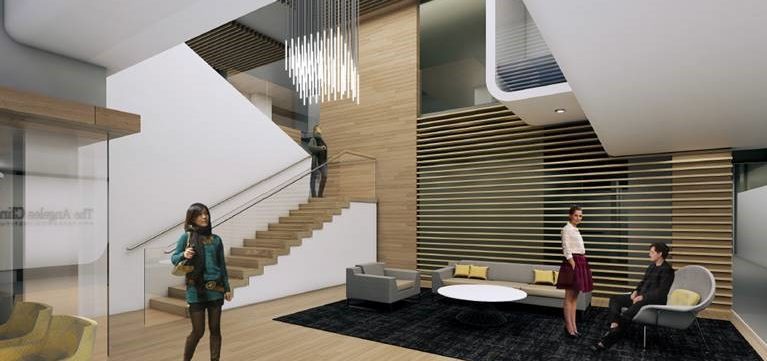Blog
An Interview with Alise Robles, this Year’s HCD Rising Star


Alise Robles of SmithGroup by SRK Headshot Day
Each year, Healthcare Design Magazine (HCD) awards exceptional healthcare designers an award for their outstanding achievements so far and what they plan to do in the future. The interview below is particularly interesting because Alise Robles, this year’s rising star winner has an interesting view on how outside players such as Amazon will get into the healthcare industry. That being said, Alise would like to see designers embrace the outside players and come together to create patient-first entities.
Assoc. AIA, arch II | SmithGroup, Los Angeles
Since joining SmithGroup (Los Angeles) three years ago, Robles has set her sights on redefining how technology and physical space can merge to create next-generation healthcare environments. She’s expanded her knowledge in healthcare architecture, working on a variety of projects from schematic design to construction documentation to construction administration. She’s also served as a key team member on multiple clinics for Cedars-Sinai Medical Delivery Network.
In 2016, leadership selected her to participate in the firm’s internal design lab project, The Idea Lab, focused on artificial intelligence (AI) and healthcare. Through the program, she developed “PODS (Personal, On-Demand Service)” for a retail healthcare environment in the year 2025.
Her contribution to the program led to an invitation to present at the 2017 Patient-Centered Design Conference and Innovation Summit to discuss the impact of AI on present and future healthcare environments, where she won first place in the Experiential Design Competition for her presentation on findings from the Idea Lab.
Through her continued research in technology and healthcare, she’s exploring how patients will access care in the future and how AI will be an integral part of their experience.
Healthcare Design: What drew you to a career in healthcare design?
Robles: During my adolescence, I saw my father become my mother’s primary caretaker while she was a cancer patient at the Cleveland Clinic Florida-Weston. From this experience, my empathy for patients with chronic illnesses gave me a profound appreciation for the role of exceptional design to improve patient care, and I wanted to translate that into something tangible.
Describe a recent project and a lesson you learned through your work.
A comprehensive oncology clinic for a large-scale healthcare provider. I’ve been involved from design development to construction administration for this multiphase, tenant improvement project—an experience that, given the early stages of my career, has been eye-opening. I’m learning that all construction administration projects have specific, nuanced challenges, but that finding solutions at every stage has been incredibly rewarding.
What do you think is the number one issue facing healthcare designers today?
Disruptors from industries traditionally considered to be unrelated to healthcare. The healthcare industry isn’t composed only of physicians and providers anymore, as Amazon, Berkshire Hathaway, JPMorgan, and tech companies begin to assert themselves in the industry. The inevitable implications for patients have yet to be determined. The challenge as designers will be to anticipate a changing future.
Share an idea you have for addressing that problem.
As designers, we need to redefine how technology and physical space can merge to create a new healthcare environment that includes benefits from the multiplicity of industries and technologies that are weaving into the fabric of healthcare design. Whether it’s a new approach to retail health designed to adapt to individual or market needs or a comforting, casual wellness center for the healthcare “avoider,” the exploration of how patients will access future care can be best determined by how varying players come together to create patient-first entities.
What’s your favorite design technology to use at work?
Pen and paper.
What’s your favorite place to go for inspiration?
A little bit of anywhere and everywhere. I find inspiration in life’s daily rituals and everyday tasks—it’s the simplest pieces that inspire me to think bigger.







